#The Snow Queen
Text
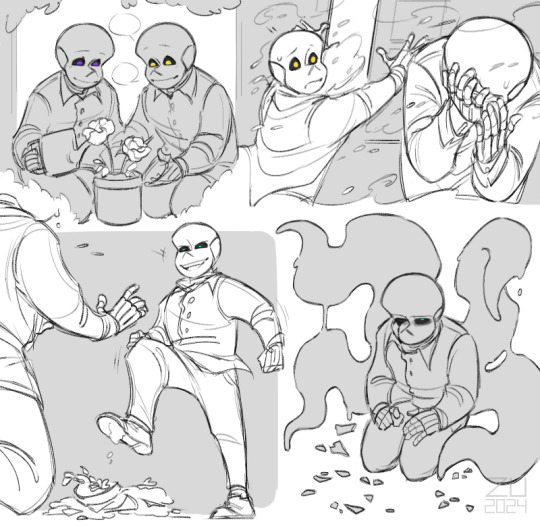
✧ Dreamtale x The Snow Queen ✧
[3/5] Happy anniversary ♡
Dream & Nightmare by jokublog
#zu art#dreamtale#kai!nightmare#gerda!dream#snow queen!nim?#crossover#the snow queen#dream!sans#nightmare!sans#passive!nightmare#anniversary#undertale#undertale au#utmv#I wanted to make something special for this day and found my old (literally December 2020) idea of this crossover *^*#it was a surprise for me that Kai and Gerda ''are not relatives but love each other like siblings'' which is so Dreamtale coded??#enjoy╰(*´︶`*)╯♡
803 notes
·
View notes
Text

The Snow Queen by Hans Christian Andersen
Artist : Errol le Cain (1941-1989)
#errol le cain#the snow queen#hans christian andersen#hans andersen#children's literature#children's illustration#fairy tale#children's books#vintage illustration#fairy story#children's book#fairy tales#fairy#fairy stories#snow#la reine des neiges#queen#reine#neige#winter birds#british illustrator#british artist#deer#cerf
2K notes
·
View notes
Text
Cross-posting an essay I wrote for my Patreon since the post is free and open to the public.

Hello everyone! I hope you're relaxing as best you can this holiday season. I recently went to see Miyazaki's latest Ghibli movie, The Boy and the Heron, and I had some thoughts about it. If you're into art historical allusions and gently cranky opinions, please enjoy. I've attached a downloadable PDF in the Patreon post if you'd prefer to read it that way. Apologies for the formatting of the endnotes! Patreon's text posting does not allow for superscripts, which means all my notations are in awkward parentheses. Please note that this writing contains some mild spoilers for The Boy and the Heron.

Hayao Miyazaki’s 2023 feature animated film The Boy and the Heron reads as an extended meditation on grief and legacy. The Master of a grand tower seeks a descendant to carry on his maddening duty, balancing toy blocks of magical stone upon which the entire fabric of his little pocket of reality rests. The world’s foundations are frail and fleeting, and can pass away into the cold void of space should he neglect to maintain this task. The Master’s desire to pass the torch undergirds much of the film’s narrative.

(Isle of the Dead. Arnold Böcklin. 1880. Oil on Canvas. Kunstmuseum. Basel, Switzerland.)
Arnold Böcklin, a Swiss Symbolist(1) painter, was born on October 16 in 1827, the same year the Swiss Evangelical Reformed Church bought a plot of land in Florence from the Grand Duke of Tuscany, Leopold II, that had long been used for the burials of Protestants around Florence. It is colloquially known as The English Cemetery, so called because it was the resting place of many Anglophones and Protestants around Tuscany, and Böcklin frequented this cemetery—his workshop was adjacent and his infant daughter Maria was buried there. In 1880, he drew inspiration from the cemetery, a lone plot of Protestant land among a sea of Catholic graveyards, and began to paint what would be the first of six images entitled Isle of the Dead. An oil on canvas piece, it depicts a moody little island mausoleum crowned with a gently swaying grove of cypresses, a type of tree common in European cemeteries and some of which are referred to as arborvitae. A figure on a boat, presumably Charon, ferries a soul toward the island and away from the viewer.
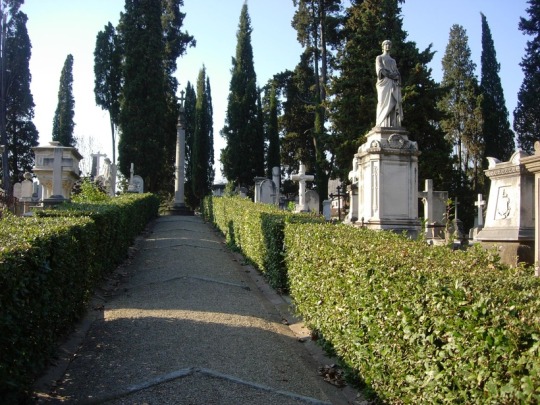
(Photo of The English Cemetery in Florence. Samuli Lintula. 2006.)
The Isle of the Dead paintings varied slightly from version to version, with figures and names added and removed to suit the needs of the time or the commissioner. The painting was glowingly referenced and remained fairly popular throughout the late 19th and early 20th centuries. The painting used to be inescapable in much of European popular culture. Professor Okulicz-Kozaryn, a philologist (someone with a deep interest in the ways language and cultural canons evolve)(2) observed that the painting, like many other works in its time, was itself iterative and became widely reiterated and referenced among its contemporaries. It became something like Romantic kitsch in the eyes of modern art critics, overwrought and excessively Byronic. I imagine Miyazaki might also resent a work of that level of manufactured ubiquity, as Miyazaki famously held Disney animated films in contempt (3). Miyazaki’s films are popularly aspirational to young animators and cartoonists, but gestures at imitation typically fall well short, often reducing Miyazaki’s weighty films to kitschy images of saccharine vibes and a lazy indulgence in a sort of empty magical domestic coziness. Being trapped in a realm of rote sentiment by an uncritical, unthoughtful viewership is its own Isle of Death.

(Still from The Boy and the Heron, 2023. Studio Ghibli.)
The Boy and the Heron follows a familiar narrative arc to many of Miyazaki’s other films: a child must journey through a magical and quietly menacing world in order to rescue their loved ones. This arc is an echo of Satsuki’s journey to find Mei in My Neighbor Totoro (1988) and Chihiro’s journey to rescue her parents Spirited Away (2001). To better understand Miyazaki’s fixation with this particular character journey, it can be instructive to watch Lev Atamanov’s 1957 animated film, The Snow Queen (4)(5), a beautifully realized take on Hans Christian Andersen’s 1844 children’s story (6)(7). Mahito’s journey continues in this tradition, as the boy travels into a painted world to rescue his new stepmother from a mysterious tower.
Throughout the film, Miyazaki visually references Isle of the Dead. Transported to a surreal world, Mahito initially awakens on a little green island with a gated mausoleum crowned with cypress trees. He is accosted by hungry pelicans before being rescued by a fisherwoman named Kiriko. After a day of catching and gutting fish, Mahito wakes up under the fisherwoman’s dining table, surrounded by kokeshi—little wooden dolls—in the shapes of the old women who run Mahito’s family’s rural household. Mahito is told they must not be touched, as the kokeshi are wards set up for his protection. There is a popular urban legend associated with the kokeshi wherein they act as stand-ins for victims of infanticide, though there seems to be very little available writing to support this legend. Still, it’s a neat little trick that Miyazaki pulls, placing a stray reference to a local legend of unverifiable provenance that persists in the popular imagination, like the effect of fairy stories passed on through oral retellings, continually remolded each new iteration.
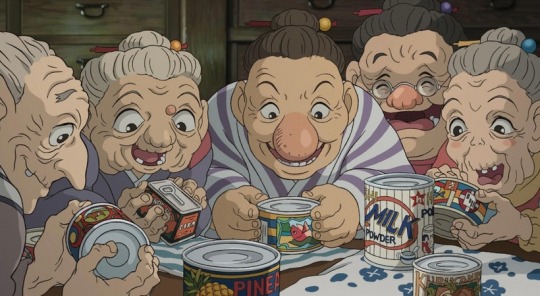
(Still from The Boy and the Heron, 2023. Studio Ghibli.)
Kiriko’s job in this strange landscape is to catch fish to nourish unborn spirits, the adorable floating warawara, before they can attempt to ascend on a journey into the world of the living. Their journey is thwarted by flocks of supernatural pelicans, who swarm the warawara and devour them. This seems to nod to the association of pelicans with death in mythologies around the world, especially in relationship to children (8). Miyazaki’s pelicans contemplate the passing of their generations as each successive generation seems to regress, their capacity to fulfill their roles steadily diminishing.
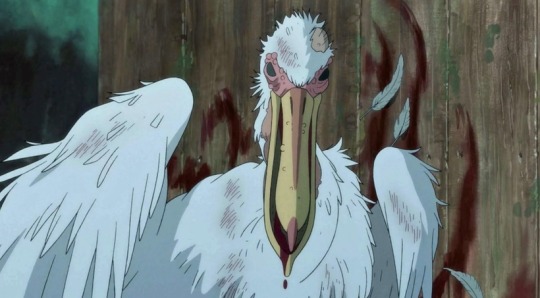
(Still from The Boy and the Heron, 2023. Studio Ghibli.)
As Mahito’s adventure continues, we find the landscapes changing away from Böcklin’s Isle of the Dead into more familiar Ghibli territories as we start to see spaces inspired by one of Studio Ghibli’s aesthetic mainstays, Naohisa Inoue and his explorations of the fantasy realms of Iblard. He might be most familiar to Ghibli enthusiasts as the background artists for the more fantastical elements of Whisper of the Heart (1995).

(Naohisa Inoue, for Iblard Jikan, 2007. Studio Ghibli.)
By the time we arrive at the climax of The Boy and the Heron, the fantasy island environment starts to resemble English takes on Italian gardens, the likes of which captivated illustrators and commercial artists of the early 20th century such as Maxfield Parrish. This appears to be a return to one of Böcklin’s later paintings, The Island of Life (1888), a somewhat tongue-in-cheek reaction to the overwhelming presence of Isle of the Dead in his life and career. The Island of Life depicts a little spot of land amid an ocean very like the one on which Isle of the Dead’s somber mausoleum is depicted, except this time the figures are lively and engaged with each other, the vegetation lush and colorful, replete with pink flowers and palm fronds.

(Island of Life. Arnold Böcklin. Oil on canvas. 1888. Kunstmuseum. Basel, Switzerland.)
In 2022, Russia’s State Hermitage Museum in Saint Petersburg acquired the sixth and final Isle of the Dead painting. In the last year of his life, Arnold Böcklin would paint this image in collaboration with his son Carlo Böcklin, himself an artist and an architect. Arnold Böcklin spent three years painting the same image three times over at the site of his infant daughter’s grave, trapped on the Isle of the Dead. By the time of his death in 1901 at age 74, Böcklin would be survived by only five of his fourteen children. That the final Isle of the Dead painting would be a collaboration between father and son seemed a little ironic considering Hayao Miyazaki’s reticence in passing on his own legacy. Like the old Master in The Boy and the Heron, Miyazaki finds himself with no true successors.
The Master of the Tower's beautiful islands of painted glass fade into nothing as Mahito, his only worthy descendant, departs to live his own life, fulfilling the thesis of Genzaburo Yoshino’s 1937 book How Do You Live?, published three years after Carlo Böcklin’s death. In evoking Yoshino and Böcklin’s works, Hayao Miyazaki’s The Boy and the Heron suggests that, like his character the Master, Miyazaki himself must make peace with the notion that he has no heirs to his legacy, and that those whom he wished to follow in his footsteps might be best served by finding their own paths.
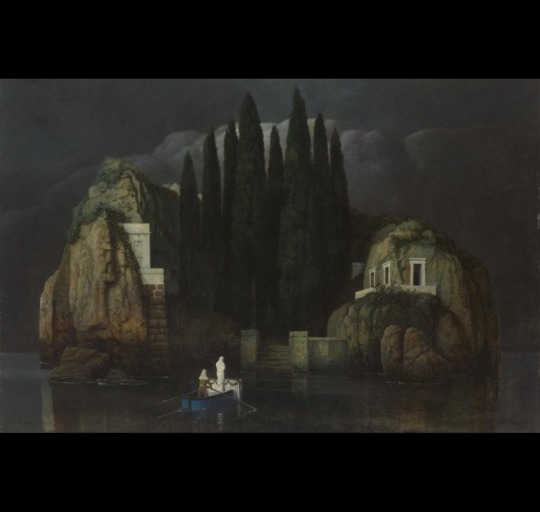
(Isle of the Dead. Arnold and Carlo Böcklin. Oil on canvas. 1901. The State Hermitage Museum. Saint Petersburg, Russia.)
INFORMAL ENDNOTES
1 - Symbolists are sort of tough to nail down. They were started as a literary movement to 1 distinguish themselves from the Decadents, but their manifesto was so vague that critics and academics fight about it to this day. The long and the short of it is that the Symbolists made generous use of a lot of metaphorical imagery in their work. They borrow a lot of icons from antiquity, echo the moody aesthetics from the Romantics, maintained an emphasis on figurative imagery more so than the Surrealists, and were only slightly more technically married to the trappings of traditionalist academic painters than Modernists and Impressionists. They're extremely vibes-forward.
2 - Okulicz-Kozaryn, Radosław. Predilection of Modernism for Variations. Ciulionis' Serenity among Different Developments of the Theme of Toteninsel. ACTA Academiae Artium Vilnensis 59. 2010. The article is incredibly cranky and very funny to read in parts. Contains a lot of observations I found to be helpful in placing Isle of the Dead within its context.
3 - "From my perspective, even if they are lightweight in nature, the more popular and common films still must be filled with a purity of emotion. There are few barriers to entry into these films-they will invite anyone in but the barriers to exit must be high and purifying. Films must also not be produced out of idle nervousness or boredom, or be used to recognise, emphasise, or amplify vulgarity. And in that context, I must say that I hate Disney's works. The barrier to both the entry and exit of Disney films is too low and too wide. To me, they show nothing but contempt for the audience." from Miyazaki's own writing in his collection of essays, Starting Point, published in 2014 from VIZ Media.
4 - You can watch the movie here in its original Russian with English closed captions here.
5 If you want to learn more about the making of Atamanoy's The Snow Queen, Animation Obsessive wrote a neat little article about it. It's a good overview, though I have to gently disagree with some of its conclusions about the irony of Miyazaki hating Disney and loving Snow Queen, which draws inspiration from Bambi. Feature film animation as we know it hadonly been around a few decades by 1957, and I find it specious, particularly as a comic artistand author, to see someone conflating an entire form with the character of its content, especially in the relative infancy of the form. But that's just one hot take. The rest of the essay is lovely.
6 - Miyazaki loves this movie. He blurbed it in a Japanese re-release of it in 2007.
7 - Julia Alekseyeva interprets Princess Mononoke as an iteration of Atamanov's The Snow Queen, arguing that San, the wolf princess, is Miyazaki's homage to Atamanoy's little robber girl character.
8 - Hart, George. The Routledge Dictionary of Egyptian Gods And Goddesses. Routledge Dictionaries. Abingdon, United Kingdom: Routledge. 2005.
#hayao miyazaki#the boy and the heron#how do you live#arnold böcklin#carlo böcklin#symbolists#symbolism#animation#the snow queen#lev atamanov#naohisa inoue#the endnotes are very very informal aksjlsksakjd#sorry to actual essayists
504 notes
·
View notes
Photo

'The Snow Queen' by Kay Nielsen, 1924
607 notes
·
View notes
Text
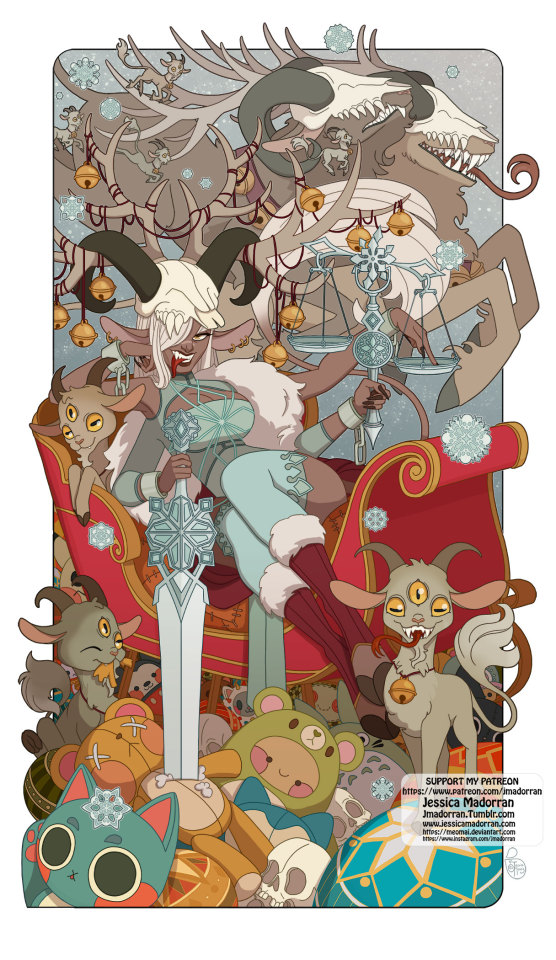
So this month’s Twisted Fairy Tale illustration theme is…..
The Snow Queen + Krampus + Justice (Tarot Card) = Twisted Snow Queen
…and this is the illustration created based off this theme 😁. This will join my Inprnt.com print line up at the end of this month.
December Patreon Moon Tier - Will receive a coloring page png of the line work of this piece at the end of this month.
December Patreon Sun and Nebula Tier - Will receive a double sided mini art print (the other side will be the line art in tarot card format) of this illustration in the mail along with this month’s sticker reward (design has not been chosen yet). And will also be receiving a coloring page png of the line work of this piece at the end of this month too.
To lend your support and/or see behind the scene process work and/or get this month’s Patreon rewards join my Patreon - https://www.patreon.com/jmadorran
#Jessica Madorran#Jmadorran#Character Design#illustration#fairy tale#The Snow Queen#Snow Queen#Krampus#art print#artprints#inprnt#inprnt.com#tarot card#patreon#patreon artist
148 notes
·
View notes
Text

B/w Gradient piece of Kay Ambroosson from @lorebrewery 's podcast Far, Far Away ❄️
For @estelofimladris as a prize for my friend VJ's streaming marathon! Thank you again for supporting him and of course, thank you for this blessing of a character! Check out the podcast if you can folks!!
Art is mine! I also do coms!
#anonbeadraws#digital art#prize#character art#lorebrewery#kay ambroosson#the snow queen#podcast fanart#art#b/w#Also#would anyone be interested in this style as a com?? Hmmm#lemme knoooow
373 notes
·
View notes
Text
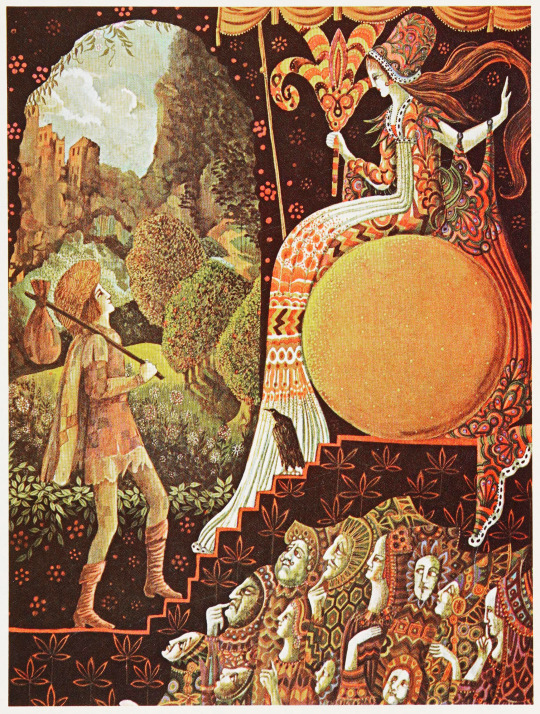
Errol Le Cain (1941-1989), ''The Snow Queen'' by Naomi Lewis, 1979
(from ''Children & Literature'' by John Warren Stewig, 1980)
Source
#Errol Le Cain#british artists#the snow queen#naomi lewis#Hans Christian Andersen#children's books#children's illustration
146 notes
·
View notes
Text

from 'the snow queen' opera ♡
#the snow queen#hans christian andersen#winter#wintercore#aesthetic#snow#words#excerpts#nymphaea's whispers
99 notes
·
View notes
Text

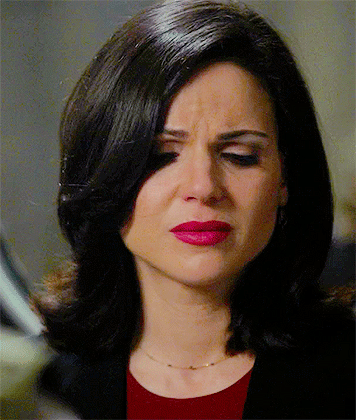

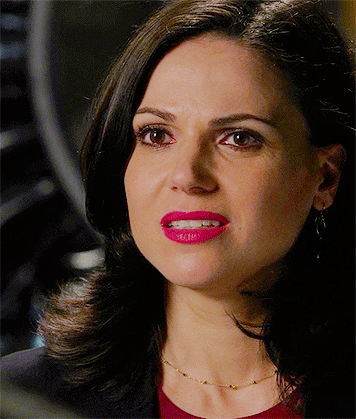





30/365 days of regina mills
#once upon a time#ouat#ouatedit#reginamillsedit#regina mills#lana parrilla#the snow queen#365rm#me knowing full well how beautiful lana is and still being in awe of her every single time 😩
100 notes
·
View notes
Text

Kay, is it really you?
#kay#gerda#the snow queen#the lady in the snow#bilibin#illustration#russian#folklore#hans christian andersen#drawing#myart#oc
1K notes
·
View notes
Text

The Snow Queen
Artist : Vladimir Nenov
#vladimir nenov#the snow queen#la reine des neiges#children's literature#children's illustration#children's books#fairy story#children's book#fairy tales#fairy tale#fairy stories#russian artist#russian art#beautiful art#winter#hiver#cold#snow
435 notes
·
View notes
Text
Ok! Turning my Snow White short story into a comic and got the first chapter up on Webtoon!
(Ao3 is apparently down so I'll come back when its working and link to the prose version here)
Edit: here's the link!
#Sunlight and Snowdrops#my writing#my art#webtoons#webtoon#snow white#snow white retelling#web comics#fairy tales#dark fairytale#snow white and rose red#the snow queen#evil queen#witch queen#red riding hood
58 notes
·
View notes
Photo

The Snow Queen by Anastasia Arkhipova
2K notes
·
View notes
Text

So this month’s Twisted Fairy Tale theme is…..
The Snow Queen + Krampus = Twisted Snow Queen
…and this is a character design exploration for the Snow Queen based off this theme.
To lend your support and/or see behind the scene process work and/or get this month’s Patreon rewards join my Patreon - https://www.patreon.com/jmadorran
#Jessica Madorran#Jmadorran#Character Design#Fairy Tale#The Snow Queen#Snow Queen#Krampus#Character Exploration#Patreon#Patreon Artist
145 notes
·
View notes
Text

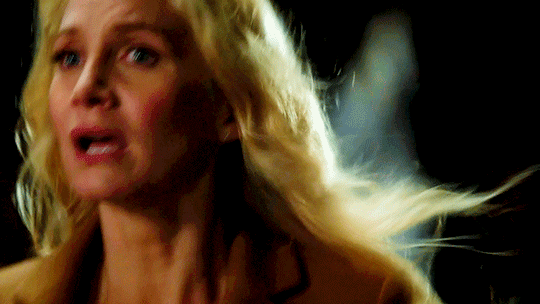
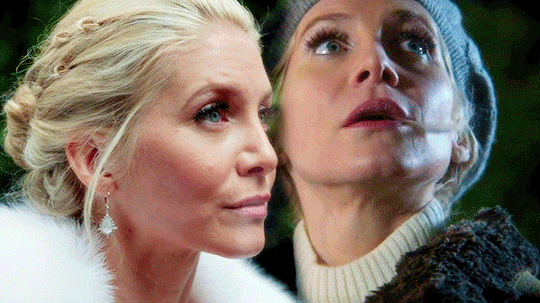
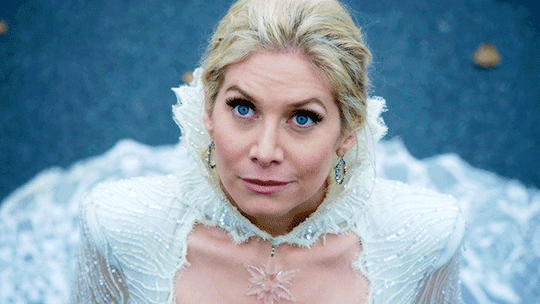
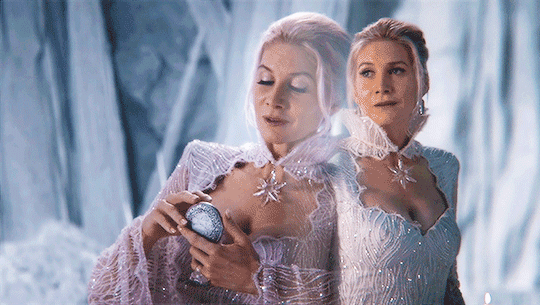
Eventually, everyone sees me as a monster. Maybe it's time to embrace that, and be one. THE SNOW QUEEN, ONCE UPON A TIME, SEASON 4
#ouatedit#onceuponatimeedit#ingridedit#thesnowqueenedit#once upon a time#ouat#ingrid#the snow queen#s4#character: ingrid#event: rewatch 22
195 notes
·
View notes
Text
Images from Andersen’s literary fairy tales that have been burned into my mind since childhood:
The swindlers in The Emperor’s New Clothes stuffing their pockets full of the fine silk and gold thread they were meant to be weaving with
The witch combing the memories out of Gerda’s hair with her golden comb in The Snow Queen
The little bird in The Nightingale singing so beautifully of the silent churchyard, which is like a garden with evergreen grass, elder trees and white roses watered by the tears of those left behind, that Death himself becomes homesick and leaves the dying emperor be
The prince in The Little Mermaid having a page’s outfit made for “his little foundling”, besides her silk dresses, so she can go horseback riding in the woods with him
Little Thumbelina sleeping in a polished walnut shell, on a mattress of violets, under a rose petal blanket
Andersen’s fairy tales are full of guilt, cruelty and suffering, and I tend to prefer the retold or abbreviated versions to his originals, but in between the troubles they are so charming
#hans christian andersen#hc andersen#fairy tales#the emperor's new clothes#the snow queen#the nightingale#the little mermaid#thumbelina#laura tumbles
418 notes
·
View notes